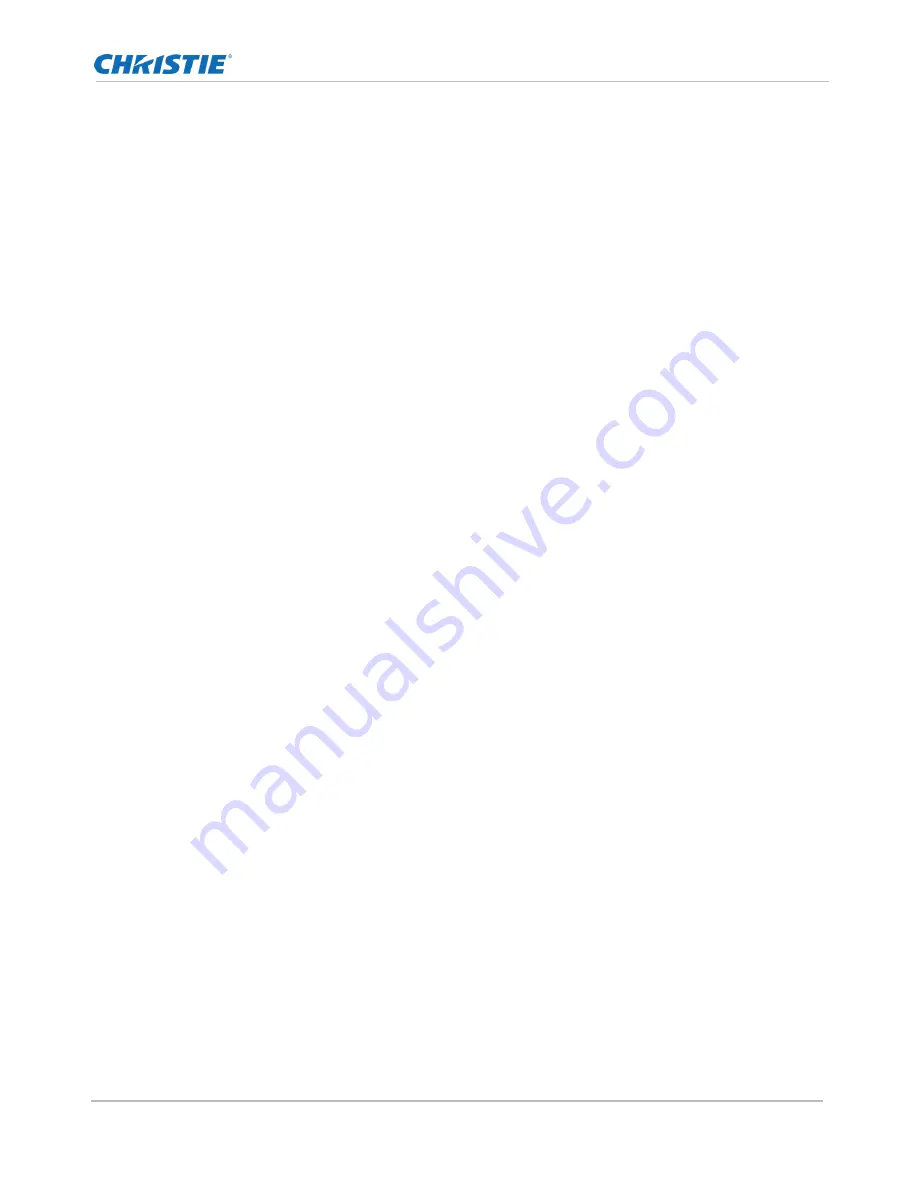
Scripting
Spyder X20 User Manual
49
020-000916-01 Rev. 1 (04-2016)
1.
You can create looks on screen and ‘snapshot’ them to the script. After creating a look using the display
simulator, right-click in t
he command key area and select ‘Create from Screens’ from the context menu
presented.
2.
You can create a
Mixer
out of a script element by right clicking on that element and ‘convert to mixer’.
By dropping multiple sources into the same element at different cues, allows you to mix sources in one
window using the script.
3.
You can create an
input array
out of a script element by right clicking on that element and ‘convert to
input array’. This will allow you to display two sources simultaneously. If one source
is not ready, the
other source will wait until that source is ready to be displayed.
This is very useful when using a high-def
dual-head background source.
4.
Add an
off element
to a script by right clicking in a cue and layer cross box and select add off element.
An
off element
becomes useful when working with
relative command keys.
Cue Triggers
A cue trigger can be used to automate the execution of a script cue. It can be based on the Spyder’s internal
clock, or it can be controlled from an external time source. The following trigger types are available within
Spyder:
WAIT TRIGGER:
Causes the script processor to count down a specified number of frames and then execute the
next script cue. When the wait Trigger cue is executed, the countdown timer begins automatically, allowing
multiple wait triggers to be created on subsequent cues to automate multi-step scripting operations.
WAITX TRIGGER:
The wait ‘X’ trigger is an unresolved time trigger. The first time a script cue using a wait ‘X’
trigger is executed, the scripting engine will begin counting the number of frames until the next cue is manually
executed. The script engine will then automatically record the elapsed time and change the cue trigger’s type
from WaitX to Wait. Subsequent executions of the script cue will function as a standard wait trigger.
TIME TRIGGER:
Allows an external clock source to provide a time code that will be monitored for a user-
defined timecode, which will cause the next cue to be executed by the scripting engine. The external clock
source must be provided from a device connected to the SourceMaster deck controller, and therefore must
support a standard playback machine protocol such as BVW75 or Odetics. Refer to Required Hardware (page
67).
To add a Trigger to a script cue, click on the cue within the script panel, and select a trigger type and Trigger
length value on the properties panel.
Summary of Contents for Spyder X20
Page 1: ...Spyder X20 User Manual 020 000916 01 ...
Page 2: ......
Page 3: ...Spyder X20 User Manual 020 000916 01 ...
Page 133: ...Spyder Hardware Family Spyder X20 User Manual 133 020 000916 01 Rev 1 04 2016 ...
Page 138: ...Spyder Hardware Family Spyder X20 User Manual 138 020 000916 01 Rev 1 04 2016 ...
Page 170: ...Spyder X20 HDCP Functionality Option Spyder X20 User Manual 170 020 000916 01 Rev 1 04 2016 ...
Page 172: ......






























